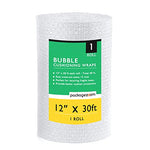You have no items in your shopping cart.
Reduce, Reuse, Recycle has become the mantra of the modern world, as we strive to find sustainable solutions to preserve our planet for future generations. Among the many eco-friendly practices, green recycling stands out as a key player in the fight against environmental degradation. In this comprehensive guide, we will explore the concept of green recycling, its benefits, and how you can actively contribute to this movement. Join us on this journey to discover how small actions can make a big difference in creating a greener future.
What is Green Recycling?
Green recycling refers to the process of converting waste materials into reusable products while minimizing the environmental impact. Unlike traditional recycling methods, green recycling goes beyond separating materials for reuse. It emphasizes the use of energy-efficient techniques, eco-friendly materials, and reducing waste generation altogether. By adopting green recycling practices, we can effectively tackle the growing issue of waste accumulation while preserving our natural resources.
The Benefits of Green Recycling
1. Conservation of Natural Resources
Green recycling plays a vital role in conserving our planet's precious natural resources. By reusing and recycling materials, we reduce the need for raw materials extraction, such as mining or deforestation. For instance, recycling paper can significantly reduce the demand for timber, preserving forests and the biodiversity they support.
2. Energy Conservation
Did you know that recycling materials requires less energy compared to producing new ones from scratch? Green recycling helps conserve energy by utilizing recycled materials instead of processing new ones. For example, producing aluminum from recycled sources consumes only about 5% of the energy required for virgin aluminum production. By opting for green recycling, we can reduce our carbon footprint and mitigate the effects of climate change.
3. Waste Reduction
One of the primary advantages of green recycling is the reduction of waste sent to landfills or incinerators. When waste materials are recycled, they are diverted from ending up in disposal sites, which often contribute to pollution and environmental degradation. Instead, these materials are given a new lease on life, minimizing the need for landfills and reducing greenhouse gas emissions.
4. Creation of Green Jobs
Green recycling initiatives create employment opportunities in various sectors. Recycling centers, waste management facilities, and manufacturing plants that use recycled materials all contribute to job creation. These green jobs not only support local economies but also promote sustainable practices, making them an essential part of a greener future.
5. Pollution Reduction
Green recycling significantly reduces pollution levels associated with waste disposal. Landfills and incinerators produce harmful gases, leachate, and toxic residues that can contaminate soil, water, and air. By diverting waste through recycling, we can minimize pollution and create a healthier environment for all living beings.
How Can You Contribute to Green Recycling?
1. Practice Segregation at Source
Segregation at source is the first step towards effective green recycling. By separating your waste into different categories such as paper, plastic, glass, and metal, you enable easy recycling and minimize contamination. Educate yourself and your community about proper waste segregation to ensure the recycling process is smooth and efficient.
2. Opt for Reusable Products
Reduce your reliance on single-use items and opt for reusable alternatives whenever possible. Invest in a sturdy water bottle, bring your own shopping bags, and choose rechargeable batteries over disposable ones. By making these small changes in your daily life, you can significantly reduce the amount of waste generated and contribute to green recycling efforts.
3. Support Recycling Programs and Initiatives
Many communities and organizations have established recycling programs and initiatives. Get involved and support these initiatives by actively participating in local recycling drives, volunteering at recycling centers, or advocating for increased recycling awareness. Remember, your active participation can inspire others and create a ripple effect of positive change.
4. Educate Yourself and Others
Knowledge is power, and spreading awareness about green recycling is crucial. Stay informed about the latest recycling practices, advancements, and regulations in your area. Share this information with your friends, family, and community through social media, community gatherings, or even by organizing educational workshops. The more people understand the importance of green recycling, the greater impact we can collectively make.
5. Purchase Recycled Products
Supporting the demand for recycled products is another way to contribute to green recycling. When shopping, look for items made from recycled materials. From clothing to furniture to office supplies, there are numerous products available that have been created using recycled materials. By choosing these products, you are not only supporting sustainable businesses but also closing the recycling loop.
Frequently Asked Questions (FAQs)
1. What materials can be recycled?
A wide range of materials can be recycled, including paper, cardboard, plastic bottles, glass containers, aluminum cans, and certain types of electronics. However, it's important to check local recycling guidelines as the acceptability of materials can vary depending on the recycling facilities in your area.
2. Can contaminated items be recycled?
Contamination can hinder the recycling process. It's important to ensure that the items you recycle are clean and free from any residues. For example, pizza boxes stained with grease cannot be recycled as the oil contaminates the paper fibers. When in doubt, consult your local recycling guidelines or contact your waste management provider for clarification.
3. Is recycling economically viable?
Yes, recycling can be economically viable. The recycling industry creates jobs and contributes to local economies. Additionally, the production of recycled materials often requires less energy compared to manufacturing new products from virgin materials. However, economic viability can vary depending on factors such as market demand, the availability of recycling infrastructure, and the cost of raw materials.
4. How can I encourage green recycling in my workplace?
To encourage green recycling in your workplace, start by setting up easily accessible recycling bins for different types of waste. Label the bins clearly and provide educational materials to inform employees about proper recycling practices. Consider organizing recycling competitions or challenges to engage employees and raise awareness about the importance of green recycling.
5. Can green recycling reduce greenhouse gas emissions?
Yes, green recycling can help reduce greenhouse gas emissions. When waste materials decompose in landfills, they release methane, a potent greenhouse gas. By diverting these materials through recycling, methane emissions can be significantly reduced. Additionally, recycling reduces the energy required for manufacturing new products, which in turn reduces the carbon emissions associated with production.
6. Are there any limitations to green recycling?
While green recycling offers numerous benefits, it does have some limitations. Certain materials, such as some types of plastics or mixed-material packaging, can be challenging to recycle due to technological limitations or lack of appropriate recycling facilities. Additionally, recycling processes consume energy and water. Therefore, reducing waste generation through practices like waste reduction and reuse should also be prioritized.
Conclusion
Green recycling is a powerful tool in our collective efforts to create a sustainable and greener future. By conserving natural resources, reducing waste, and mitigating pollution, we can make a positive impact on our planet. Through small but significant actions, such as practicing proper waste segregation, supporting recycling initiatives, and choosing reusable products, we can actively contribute to the green recycling movement. Let us embrace this eco-friendly practice and inspire others to join us on this journey towards a more sustainable world.








